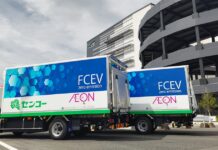Can the nuclear fusion energy that powers our sun power our cars?.
If we can harness the power of fusion, we’ll have emissions-free power for electric cars and everything else.
The U.S. is announcing a breakthrough on fusion energy on Tuesday, which will explain what scientists at the Lawrence Livermore National Laboratory have discovered about the process of making energy using the same phenomenon that powers the sun. For the first time ever, scientists have reportedly achieved a net energy gain via fusion, as Reuters reports. This would be a landmark discovery that could help break our dependency on fossil fuels for the production of electricity — and provide clean power for all those electric cars.
So, for all of us non-scientists among us, here’s how fusion works. Basically, it combines two or more atoms into one, releasing a huge amount of energy in the process. Scientists have tried to harness the reaction for decades, but have been unable to do so in a way that generated more energy than was expended. Until now. Maybe.
The video describes two ways of producing fusion energy: the first uses a “magnetic confinement reactor,” such as the International Thermonuclear Experimental Reactor (ITER) in France, while the second uses an “inertial confinement reactor” like what’s found at the National Ignition Facility in the U.S., located at the Lawrence Livermore National Laboratory in California.
This reactor uses one of the most powerful lasers in the world to make energy, and it could theoretically turn a single glass of seawater into an abundant source of energy — figure out how to do that repeatably, and you’ve got a nearly limitless source of clean energy, no fossil fuels required!
CNN reported: The National Ignition Facility project creates energy from nuclear fusion by what’s known as “thermonuclear inertial fusion.” In practice, US scientists fire pellets that contain a hydrogen fuel into an array of nearly 200 lasers, essentially creating a series of extremely fast, repeated explosions at the rate of 50 times per second.
The energy collected from the neutrons and alpha particles is extracted as heat, and that heat holds the key to producing energy.
Fusion is cleaner — it’s also much safer.
Fusion IS safer because there’s nothing about the reaction itself that must be restrained to prevent a meltdown like Fukushima. If the containment field fritzes, the reaction just stops. The radioactivity involved is vastly lower. Tritium fuel is mildly radioactive, but it’s used in small quantities and its radiation leaves the human body quickly. Highly energetic neutron emissions generate some radioactivity, but it’s easily contained and decays quickly. The fuel gets completely used, producing harmless helium and leaving no harmful waste.
Just imagine the implications this discovery could have for U.S. infrastructure — and that of the world. Fully-electric vehicles (and our homes and workplaces) could finally sever their ties with coal-burning power plants







![[Presentation] Livestream of TMC’s Press Conference](https://www.miamicars.com/wp-content/uploads/2023/02/tmb_corporate-218x150.png)








